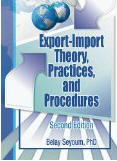|
22. |
Pre-shipment inspection (PSI)
is the responsibility
of ... |
|||
|
|
(a) |
|
|
the buyer or the importer. |
|
|
(b) |
|
|
the seller or the exporter. |
|
|
(c) |
|
|
the importer as well as the exporter. |

![]()
![]()

Updated on 05/05/2015
BusAd 175:
Spring 2012
Course #2787
April 16 - June 6, 2012
